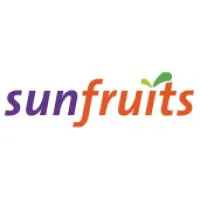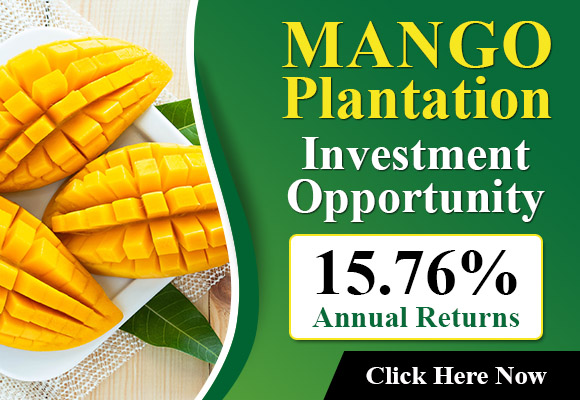Sun Fruits Exports S.A. is a producer of avocados, table grapes and citrus fruits within the Ica department in Peru. The company also manages exports of its produce out of the field to most affluent international markets and focuses more at the Chinese market, and also on cultivars that have higher profits and a stable commercial performance, like mangosteens and table grapes.
Sun Fruits was founded in 2008 as a result of the partnership of two table grape-producing families which are that of Camino and Nicolini families both of which did not have any packing facilities. This meant that they needed the responsibility of delivering their products to a packaging company but only that the lines of packaging companies were not able to be used with grapes grown on their land. To be able to remain independent and enhance the quality of their product they made the decision to establish their own warehouse, both to pack their own produce and for the purpose of providing assistance to other companies located in the area.
Striven to offer permanence in work
After almost four years of exclusively working using table grapes, Sun Fruits ventured also into cultivating winter fruit including avocados, and other citrus fruit. “With an aim to provide the possibility of permanent work for the warehouse employees we began cultivating mangoes, avocados, grapefruits and tangelos, as well as onions, as well as table grapes” declares Manuel Augusto Olaechea, Agricultural Operations Manager for the Ica-based business. We provide a variety of options to other companies in agriculture including packaging but cold storage as well as even marketing of fruit and other vegetables.
While Sun Fruits’ own avocado production has been estimated at around 6,500 tons, the area of the avocado plantation, estimated at 250 hectares, is slowly declining. “Almost all of the people is in the Ica department has switched from avocados to mangoes, table grapes and blueberries. These are the reasons for lower prices in the beginning as well as the scarcity of good water of high quality and the higher yields of other fruits,” says Manuel Augusto.
The lowest prices available at the origin for avocados
“At this moment, the largest avocados are available for sale at a FOB of 1.50-2.00 EUR/kg. This is equivalent to a price at the origin around 1.00 EUR/kg. However, smaller size avocados are only 0.50 EUR/kg. While the European market is able to absorb 500 container per week when avocado production is at its peak, production, which is when Peru ships 1,000 containers a week the excess supply causes prices to drop.”
In addition, in contrast to citrus or table grapes, it is the Ica department, situated about 250 kilometers to the southeast of Lima it competes with Piura which is located in the north of the country. The reason is that avocados can last longer in the fruit as there is no requirement to gather them quickly once they are they are ripe. “We are able to delay harvesting and wait for prices to go up. It is important to make a guess, because the price of origin at 0.60 EUR/kg isn’t enough to pay for the expenses incurred that can range from 0.70-0.80 EUR/kg, based upon the size and efficiency of farms. Additionally, it is necessary to factor in 0.33 EUR/kg of packaging cost,” says Manuel Augusto.
Quality water isn’t available
For the Avocado plantations, Sun Fruits uses the equivalent of 14,000m3 of water for irrigation. That’s fifty percent higher than 9000 m3 required for the table grape industry. “The matter is not more so much the demand for huge amounts of water but the necessity for water with a low salinity. The salinity of the aquifer that we get our water is rising and not due to close proximity to sea as we’re situated 400m above sea level, but instead because of the decreasing volume of water that is in the aquifer. This has led to a greater salt content.”
Other crops offer better returns
The final reason that leads producers of fruit in Ica to favor cultivating table grapes instead of avocados is the higher profit. “The typical profitability for table grapes is equivalent with that of an exceptional season with avocados. This could be a hypothetical scenario because it’s difficult to get an avocado harvest with a an origin price of two euros per kilogram and a typical yield of 30 tonnes per an acre.”
Manuel Augusto says that modern table grapes, like Sweet Globe or the Autumn Crisp or Sweet Globe are able to produce within 16 months after planting. “In August, we’ll begin removing avocados from a few plots. Then, in September we’ll be the planting of table grapes. They are expected to yield approximately 2000 boxes per hectare by the end of February 2026. While the initial cost for a table-grape orchard is more than an avocado farm however, the early growth is what makes it worth the investment. In addition banks are more likely to approve loans for operations that involve table grapes rather than avocado farms.”
The Chinese market is centered on the quality of its products.
In terms of the destination markets, China demands increasingly larger amounts of South America. “The product must reach the Chinese market in good high-quality, free of any disease or pests,” says Manuel Augusto. “A advantage for China’s Asian market is the fact that Chinese businesses pay well and usually upfront. Because of this, Peruvian exporters aren’t just focused on an European market in their minds. In the event that consumption of China that is now at 200 grams for each person each year (five times lower than Europe) could double to 400 grams, the exports to Europe might stop or move towards China.”
Bets on Tango Mandarins
Apart from table grapes and avocados each the year Sun Fruits cultivates about 6,000 tons of peelers that are easy to peel of those of the Murcott, Tango, Oronules and Orograndes varieties over 100 hectares. Another 60 hectares of land will be put into production over the next few years. “One benefit of cultivating citrus along with the higher profit margins compared to the production of avocados, is that it has less sensitivity to the salinity of the water. We grow five varieties of citrus however, given the huge production from other producers including Morocco, South Africa and the United States, there is an ever-growing shortage of space on the market for the earlier variety Oronules and Orogrande and Orogrande, which is why we’ve made the decision to replace them by Tango Mandarins.”
Concerning mandarins, Sun Fruits is focused on the Chinese market. “In 2022, we delivered 2 million kilograms of Tango and Nadorcott mandarins to China that were green, as both varieties do not permit increasing in temperature. Mandarins that had excellent flavor despite their green hue and were well-loved and bought in China. In Europe On contrary, European consumers prefer orange mandarins. Our company was the sole one to Peru to export these to China however, this the year others exporters drawn by the excellent results of our exports from 2022, started shipping large quantities to China. Asian company, and also got colored fruits from countries other than South Africa, which arrived earlier because of the El Nino phenomenon. The Chinese market functions in a way that resembles an auction, which is why prices dropped. The only issue in China It is essential to stay informed of the quantity of goods being shipped since prices are controlled by the quantity that arrives in the first place, and we’re not the only ones,” says Manuel Augusto.
Blueberry takes a lot of work
Blueberries are one of the Peru’s most popular products, which aren’t grown by Sun Fruits. “Although we’ve conducted a few studies with this particular fruit, the market for it worries me to a great extent. In 2010, when the first blueberry harvests started in Peru in the country of the time of its beginning was $15/kg and the median of the last times is about 5 dollars per kilogram. But, they aren’t an essential part of food items for consumers. If the prices are too high and consumption decreases, it will happen immediately. Additionally to that, harvesting blueberries takes a great deal of labor and is which is becoming scarcer in the Ica department.”
In the production of table grapes according to Manuel Augusto there’s a point at which labor availability is vital. “During the process of thinning we measure the fruits one at a time, and just leave 60 to 80 berries in each cluster. If we didn’t, the berries would not be large enough that they would not be able to export them into either the United States or Europe. This is the exact kind of work which pays efficiently, far superior to pruning or harvesting. Furthermore, we strive to pay an amount based on the efficiency of every employee, including at the warehouse for packaging. We are providing our minimum wages to virtually everyone. Everybody puts in the effort and receives a wage that is that is higher than this.”
There is a requirement to create new markets
One of the most significant problems facing Peruvian exporters and fruit producers According to Manuel Augusto is the focus of National Agrarian Health Service of Peru (Senasa) on phytosanitary control in contrast to the promotion of Peruvian agricultural products in the international market. “In my view, Senasa could make a more significant effort to establish new markets that cater to different types of vegetables and fruits that originate from Peru. The biggest issue to the sector is inability to control prices. If we don’t have sufficient water available, we could make changes to lessen the requirement for irrigation, and even implement infrastructure initiatives to supply water to the area, but we will manage the cost on the international market. Uncertainty in the market is a part of our daily life however, if we act wisely there are many opportunities that can be made use of.” ends Manuel Augusto.
 For further information:
For further information:
Manuel Augusto Oleachea (Agricultural Operations Manager)
Sun Fruits Exports S.A.
Caserio Limon s/n – San Juan Bautista, Peru
Tel. : +51 936 798 931
olaechea@sunfruits.com.pe
www.sunfruits.com.pe
Source: The Plantations International Agroforestry Group of Companies
